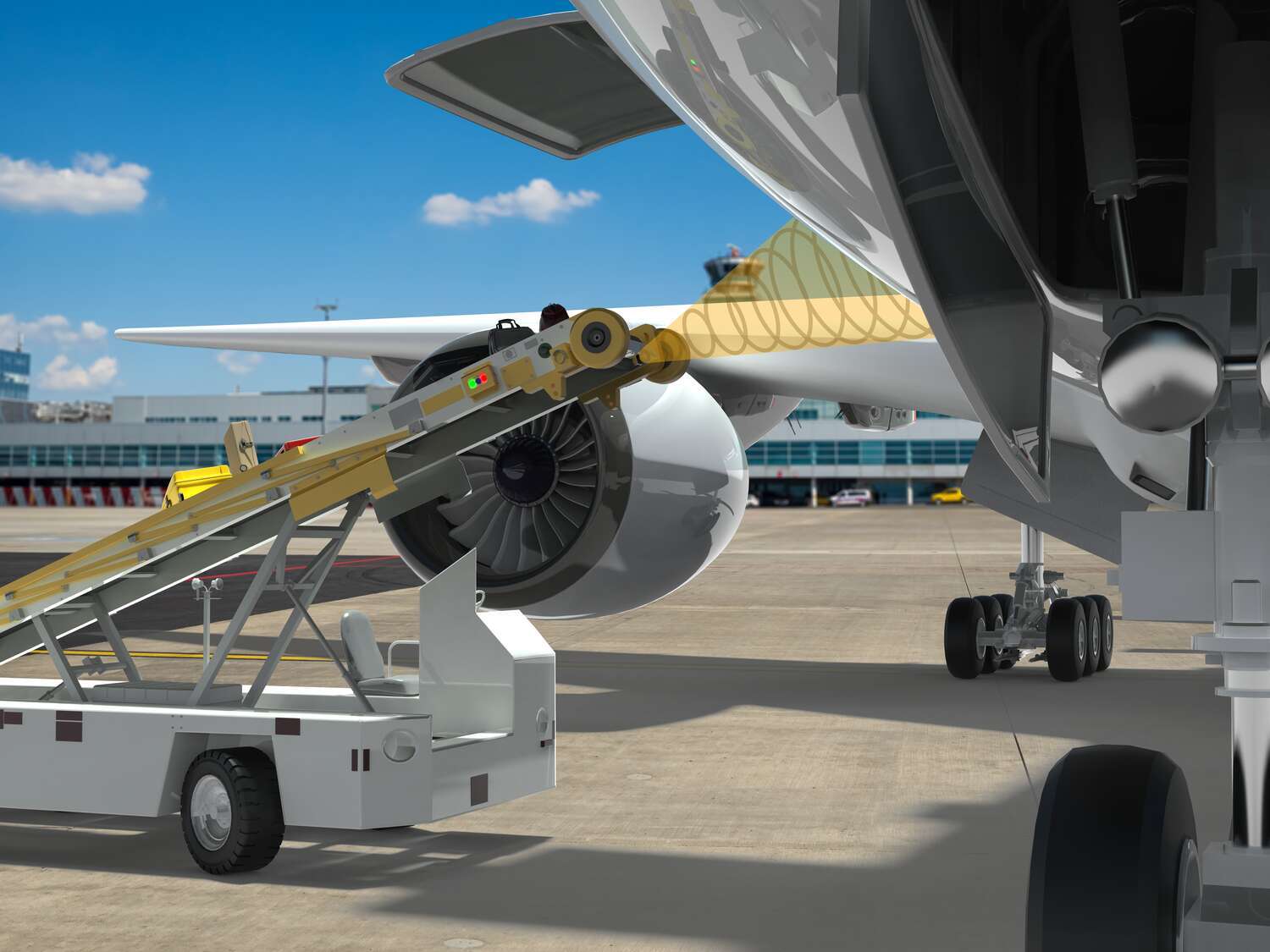Preventing Baggage Handling Equipment from Damaging Aircraft

Challenge: Ground Support Equipment Has the Potential to Collide with Airplanes and Cause Damage
If airport ground support equipment (GSE), such as a belt loader, comes into accidental direct contact with a stationary aircraft, it has the potential to cause serious damage to the plane. To ensure airline safety, regulations require that in any such incident, the plane must be pulled from service and inspected before it is allowed to take off. These inspections can introduce disruptive and costly flight delays. If a collision is found to have resulted in damage to the aircraft, it must be grounded until the necessary repairs can be made, incurring the added costs of cancelled or rescheduled flights, downtime, and possibly expensive replacement parts.
Solution: Banner’s T30R Sensor with a 45°×45° Beam Uses Radar to Detect Curved Surfaces
New standards require certain ground support equipment to include sensors to prevent collisions with aircraft. Fortunately, the Banner T30R-4545 sensor is an ideal component for this critical task. While the sensor’s radar-based detection system has a variety of applications, the product line has been expanded to include models with a wider beam, which can be particularly useful in detecting the proximity of curved shapes such as airplane fuselages.
Key Benefits
Measures the proximity and signals an alert to prevent object collisions.
With an operating rate of 122 GHz, the T30R-4545 sensor enables highly precise detection at distances of up to 10 meters. It can also reliably detect a diverse range of targets, including both high-dielectric materials like metal objects and also lower-dielectric materials like rock, wood, or other organic objects. The sensor is available with either dual discrete outputs or with analog and discrete outputs, which it can use to send signals to members of the ground crew to slow and stop the equipment before it touches an aircraft or other object.
The sensor’s 45°×45° beam pattern reliably detects curved surfaces.
Sensors with narrower beam patterns (such as the T30R-1515 with 15°×15° beam pattern) are perfect for applications requiring very targeted detection. But for larger curved objects, such as the contoured surfaces of airplanes, sensors with a greater angle of detection are much more effective. These types of curved surfaces can actually deflect narrow sensor beams, in which case the sensors might fail to detect an imminent collision hazard. This is why wider beam patterns provide a much better detection solution for vehicle-collision prevention. With 45 degrees of active sensing, T30R-4545 sensors can identify the presence of objects within that field, even if those objects have curved, shiny, or reflective surfaces.
Radar sensors are resistant to ambient weather and temperature changes.
Sensors that use radar detection are an ideal tool for outdoor use. Rain and other precipitation have the potential to refract the light from photoelectric and laser sensors, whereas radar sensors do not rely on visual target detection. And because ultrasonic sensors transmit sound waves through the air, wind or changes in air temperature can cause a reduction in detection accuracy for that method. Because radar uses electromagnetic waves, adverse environmental conditions pose no challenges for accurate detection. Additionally, the best-in-class T30R series features rugged IP67 housings, protecting the electronic components from harsh conditions including the presence of moisture or dust.
